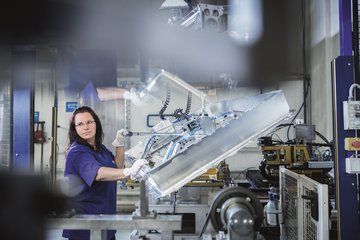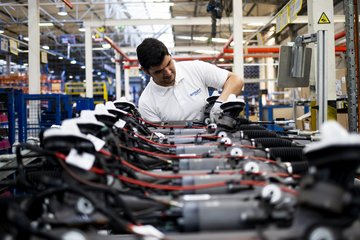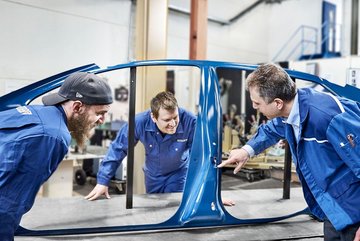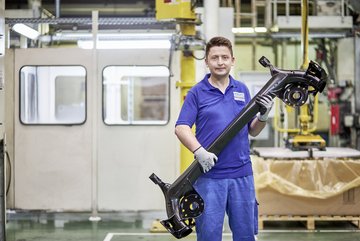
Battery trays
We've been manufacturing battery trays for renowned customers for over a decade.
Despite this proven track record
we don't settle for the status quo
We invest continuously in expanding our expertise and engage in research and pre-development projects because we want to know today what challenges our customers will face tomorrow. And we want to offer them optimum solutions, for example by showing them what options are available for adapting battery trays to changing conditions.
Did you know?
Battery trays are the central elements of electric cars. They must fulfill complex requirements such as mechanical stress, optimal use of installation space, temperature control of the batteries, tightness and crash safety. In particular, they must prevent the batteries from endangering passengers in the event of an accident.
BENTELER already has many years of experiance in the production of battery trays. The first tray was manufactured by BENTELER in 2014 at our plant in Jablonec, Czech Republic.
Battery trays
Research project
Concept development for a steel battery housing with special consideration of the joining technology and corrosion protectionThe aim of this group project with the participation of industrial partners is to exploit the advantages of ultrahigh-strength steels in the conceptual design of battery housings while specifically addressing the limitations on the freedom of design. The conceptual design also takes special account of the requirements and solutions resulting from the overall project with regard to corrosion protection, leak tightness and joining technology. In addition, a complete life cycle analysis will be carried out in this project to also evaluate the environmental impact holistically compared to a reference model.
The group project is funded by the BMWK within the framework of the IGF call for proposals "Leading Technologies for the Energy Turnaround" and supervised by the Forschungsvereinigung Stahlanwendung e.V. (FOSTA). The Forschungsvereinigung Automobiltechnik (FAT) and the Forschungsgesellschaft für Pigmente und Lacke e. V. (FPL) support the research project as cooperating research associations.
Research project
ULSAS E-VAN: Ultra-light body structure for a light electric commercial vehicleBENTELER, together with its partners Ford-Werke GmbH, Altair Engineering GmbH, Franken Guss GmbH + Co. KG, C-TEC GmbH, MORPHOTEC, voxeljet AG and RWTH Aachen University (IKA & SLA), is developing lightweight body structures and a modular battery tray system for electrically powered light commercial vehicles. Cost-efficient lightweight construction is required here in this cost-sensitive segment. In the structural area, frame-stringer construction technology, proven in aircraft construction, is used. This adapted for automotive use with correspondingly high quantities. The focus at BENTELER is on the development of a modular and size-scalable battery tray.
This research project is funded by the BMWK as part of the "Lightweight Construction" technology transfer program.





